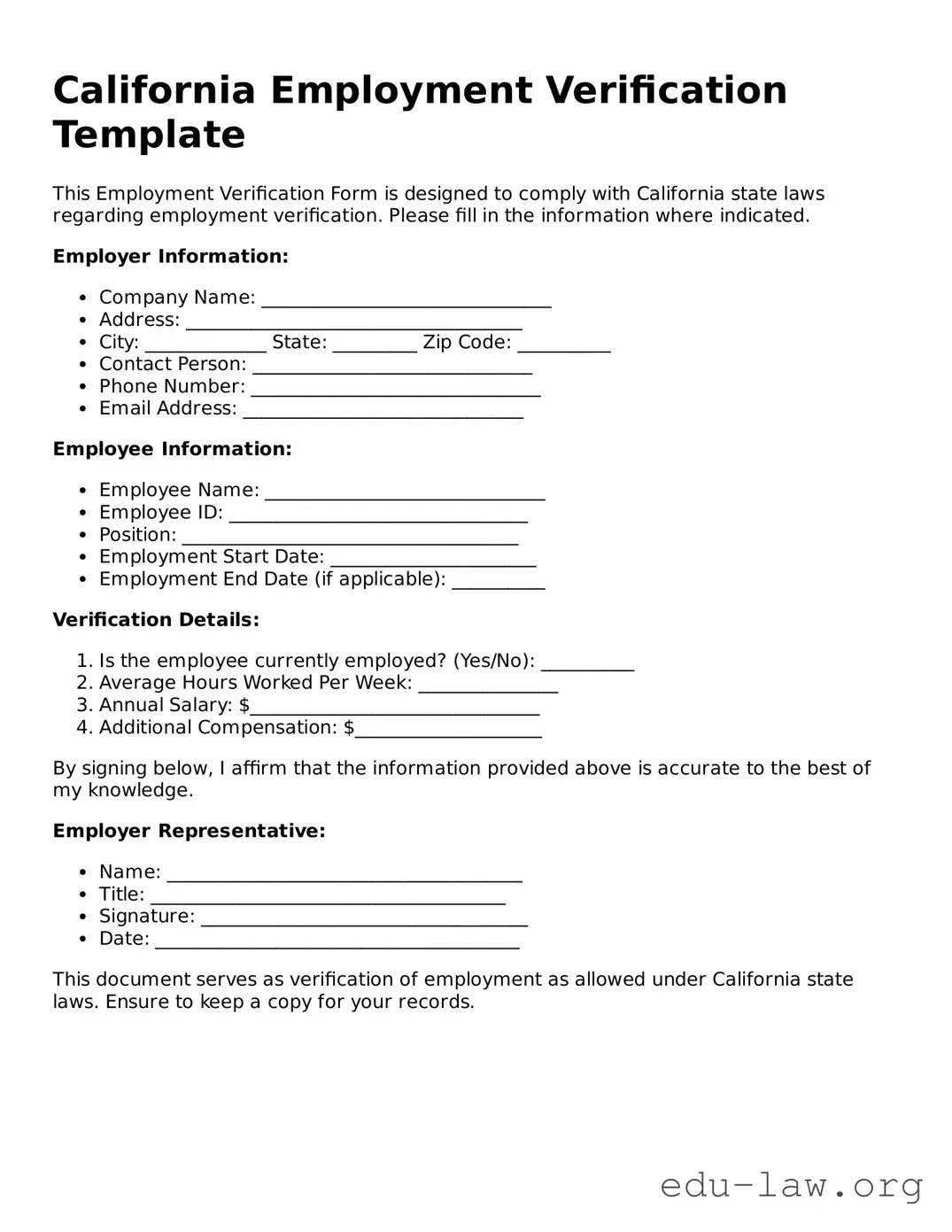The I-9 form, formally known as the Employment Eligibility Verification form, is a crucial document that employers in the United States must complete for new hires. This form requires employees to provide evidence of their identity and authorization to work in the U.S. Similar to the California Employment Verification form, the I-9 serves to ensure compliance with both federal and state employment regulations. It enables employers to confirm that their workforce is legally authorized to be employed, thereby protecting them from potential legal liabilities.
The W-2 form, known as the Wage and Tax Statement, provides a comprehensive summary of an employee's earnings and tax withholdings for a given year. Like the California Employment Verification form, the W-2 is an essential document used during the employment process, particularly for tax purposes. Both serve as important records that detail the employee's status and financial contributions, although the W-2 focuses primarily on income and payroll taxes, while the Employment Verification form pertains to employment eligibility.
The 1099 form is issued to independent contractors and self-employed individuals. Similar to the California Employment Verification form, it documents income received throughout the year but highlights a different employment classification. While the Employment Verification form ensures that employees meet legal hiring criteria, the 1099 form confirms payment for services without traditional employer-employee relationships. Both forms play their part in ensuring accurate financial and legal reporting.
The Labor Condition Application (LCA) is often used when applying for H-1B visas and ensures that employers pay foreign workers at least the prevailing wage. This document is akin to the California Employment Verification form as it verifies that workers are eligible and compensated fairly under U.S. labor laws. The LCA specifically focuses on foreign labor, while the California Employment Verification form may apply to a broader range of employees but both ensure legal compliance in hiring practices.
The Employee's Withholding Certificate, also known as Form W-4, provides employers with information about how much tax to withhold from an employee's paycheck. While the California Employment Verification form deals with employment status and eligibility, the W-4 focuses on tax implications. Both documents assist employers in meeting legal requirements regarding their workforce but serve different, although complementary, roles in the employment process.
The State Disability Insurance (SDI) form is essential in California for employees seeking to access disability benefits. Like the California Employment Verification form, the SDI form includes critical identification and employment information. Both forms are necessary for validating employment status, but while the Employment Verification form is focused on the ability to hire and retain employees, the SDI form is specifically directed at assessing eligibility for state disability benefits.
The job application form serves as a preliminary indicator of a candidate’s qualifications and suitability for a position. Much like the California Employment Verification form, the job application collects pertinent information from potential employees. The Employment Verification form focuses more on confirming an employee’s legal right to work after they have been hired, whereas the job application gathers initial information necessary for the hiring process.
The payroll documentation, often encompassing various forms used by companies to record hours worked and wages paid, shares a connection with the California Employment Verification form. Payroll records ensure compliance with labor laws and accurate payment for services rendered. Both documents create a framework for maintaining accurate employment records, ensuring that an organization's workforce is legally compliant and fairly compensated.
